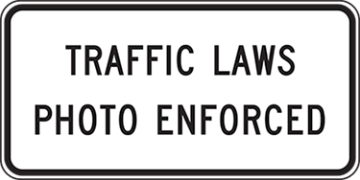Do Speed Cameras Make Us Safer?
Speed limits exist for a reason: to keep us all safer on the road. Speeding is involved in 30 percent of fatal car crashes and costs Americans more than $40 billion annually.


In many jurisdictions, cameras help police and public safety officials enforce traffic laws.
Speed limits exist for a reason: to keep us all safer on the road. The National Highway Traffic Safety Administration estimates that speeding is involved in 30 percent of fatal car crashes and costs Americans more than $40 billion annually.
Many state and local governments have turned to photo radar cameras to help enforce speed limits and promote public safety. In theory, drivers pay more attention to their speed when they know they’re at risk for getting a ticket. It stands to reason that cameras would keep drivers’ speeds in check and prevent serious injuries from high-speed crashes. But do they?
A few years ago, we conducted a natural experiment here in Arizona, so let’s look at the evidence.
In 2008, an Arizona law established a statewide photo speed enforcement program on interstate highways. The Arizona Department of Public Safety contracted with a private company to install the cameras (along with signage to alert drivers), and they began operating that fall. Vehicles that were clocked going 11 miles per hour or more over the speed limited were photographed, and speeding tickets were mailed to their owners. The system was in use until 2010 when the contract expired and the cameras were removed.
Did their presence have an effect on public safety?
Last year, a research team that included Dr. Chengcheng Hu, director of biostatistics for the Phoenix campus of the UA Mel and Enid Zuckerman College of Public Health, Dr. Steven Vanhoy, a recent graduate of the UA College of Medicine – Phoenix, and several colleagues from Banner – University Medical Center Phoenix, published a paper that offers some insight. The team was interested in whether the cameras made a difference in the number of serious injuries caused by high-speed collisions.

To get at this question, the researchers examined crash data along a 26-mile segment of Interstate-10 in Phoenix where speed cameras had been placed every 2 miles as well as a 14-mile control segment where no cameras had been deployed. They compared crash data from Jan. 1 to Dec. 31, 2009 (when cameras were in place) to data from Jan. 1 to Dec. 31, 2011 (after the cameras had been removed).
While no clear difference was seen in the number of crashes or deaths along that segment of the interstate during the two time periods, the researchers did find a significant difference in one important measure of safety: admissions to nearby trauma centers resulting from car crashes on that section of highway. In fact, they found that the removal of speed cameras was associated with a two-fold increase in admissions to Level 1 Trauma Centers (those equipped to handle the most serious injuries) as well as increased resource use.
While no one likes getting a traffic ticket, these results suggest that fixed speed cameras on an urban highway can significantly reduce severe injuries and free up resources at local trauma centers. These are important things for our communities and lawmakers to consider when deciding how to enforce public safety laws, such as speed limits.
About the Author
Will Humble, MPH, is an effective public health leader with over 28 years progressively responsible experience successfully leading public health programs. He has a collaborative management style that focuses on establishing and maintaining effective working relationships with staff and stakeholders. He’s a believer in leading and managing with emotional intelligence.
He served as the division director for health policy and evaluation at the Center for Population Science & Discovery at the University of Arizona’s Health Sciences Center where he provided leadership in the development, management and evaluation of health and public policy advocacy and initiatives. He previously served for 6 years as the director of the Arizona Department of Health Services, which provides a wide array of health related services including Arizona’s behavioral and public health systems, the Arizona State Hospital, medical and child care licensure and certification services, and the Arizona Public Health Laboratory.

